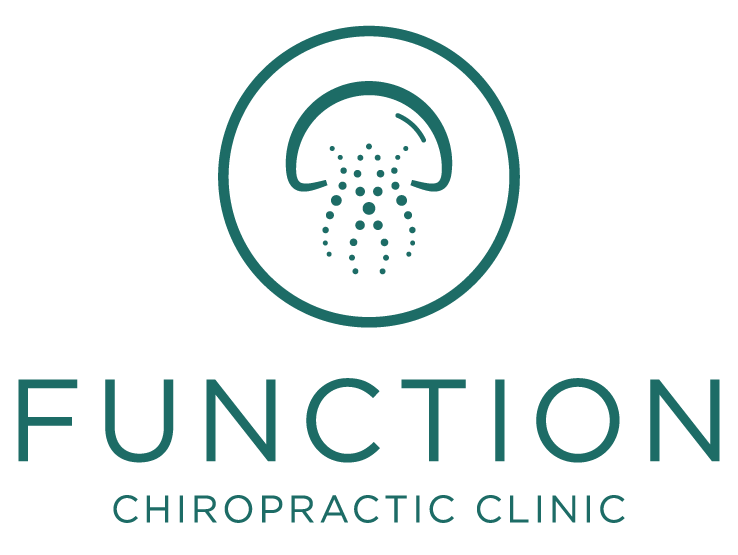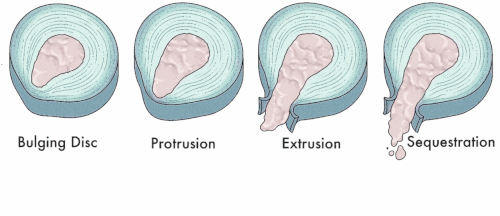What is a Disc Hernation/Slipped Disc?
Stages of disc injury, and treatment options for disc injury:
18/11/2024 By Dr Jenny Ellis (Dr of Chiropractic)
(Approx 2 minute read)
Slipped disc VS Disc herniation
Slipped disc is the outdated term for a disc herniation. The reason the medical world is moving away from the term ‘slipped’ is because the disc is firmly attached to the vertebra above and below and so cannot physically slip anywhere. Instead, the disc can become inflamed or bulges out towards the back of the spine where the nerves, joints and muscles are.
What is a Disc Herniation? / What is a Slipped Disc?
A disc herniation is a common issue that happens in the spine, most commonly in our lumbar (lower) spine but can occur in both the cervical (neck) and thoracic (mid-back) regions. It occurs when the soft, gel-like centre of the intervertebral disc, called the nucleus pulposus, gets pushed out of its usual position. In some cases, the herniated disc can press on nearby nerves or even the spinal cord, leading to further complications. This can lead to back pain and a lumbar disc may cause tingling, pins and needles, weakness or numbness sensations that travel down into your legs, which can cause sciatica. A cervical disc can cause these symptoms to refer into the arms instead of the legs. The extent of nerve symptoms will depend on both the placement and extent of disc herniation.
Anatomy:
The discs in our spine serve as shock absorbers and allow movement of the spine. The central portion of each disc, known as the nucleus pulposus, is primarily composed of water and is a thick gel substance. Surrounding this nucleus is the annulus fibrosus, which consists of 15 to 20 layers of fibrous collagen. As your body changes position, the nucleus can shift within the disc, functioning like a sponge under compression. The discs sit in between the vertebra (intervertebral space). The nerves that relay information between the brain and body exit the spinal cord next to discs.
Are there different Stages of Disc Prolapse?
Yes: Bulging, protrusion, extrusion and sequestration. Ruptured or torn outer fibres of the annulus fibrosis will aggravate the disc symptoms.
Bulging:
In this stage, the disc extends beyond the edges of the vertebrae. It’s like a tyre that’s slightly bulged out. These are quite common and up to 70% of pain-free people might have one of these on a scan without it causing any/significant problems.
Protrusion:
Here, the disc’s soft centre pushes against the outer layer but doesn’t break through it. The back ligament is still intact. This can cause aching, inflammation, stiffness in movement and sometimes nerve symptoms such as pain, pins and needles, or numbness.
Extrusion:
In this stage, some of the soft material from the centre pushes through the outer layer of the disc, but the back ligament is still okay. This stage will usually have nerve symptoms such as pain, pins and needles, numbness and sometimes loss of muscle function.
Sequestration:
This is the most severe stage, where the soft material has broken through the outer layer and the back ligament is damaged. A piece of the soft centre has moved into the space around the spinal cord. This level will have the same nerve symptoms as the level previous, and will need close monitoring for symptoms arising from the spinal cord, such as changes to bowel or bladder function like loss of control or genital sensation.
Do Disc Herniations Heal?
Yes, they can heal, usually within a few weeks. However, if the patient has an annular tear, the surrounding layers of the nucleus pulposus may take longer to heal, especially if symptoms are present since both structures are affected. Common causes for this include ageing, repetitive movements, and sudden motions. Some discs take a few days, some may take months, and there are some that take years however this is normally due to loading patterns, annular injury, and genetics, stress, health and activity levels will play a role.
How Do Chiropractors Manage Disc Herniations/Slipped discs?
The first step in managing disc herniations is to figure out the which area, to what extent, and what is the underlying cause. Disc injuries do not occur out of nowhere, so sometimes they occur as a result of major injury like a lift or fall, but most likely they are a result of repetitive strain from postures or loading patterns in your day to day life. The first step to this is going through your current history and identify key points such as symptom pattern, aggravating and relieving factors, lifestyle and more. We then use orthopedic and movement assessments to test the injury to the disc, nerve and how you’re loading it. If the problem is severe, or has been ongoing we have the option of referring for an MRI for closer assessment. X-rays will show us the space for the disc, but it does not show the disc structure so it is not the optimal imaging for suspected disc injury.
The first step with treatment is to reduce pain. We use decompression techniques to gently stretch the spine, alleviating pressure on the discs and nerves. Acupuncture/dry needling is usually very effective at pain relief from muscle spasm. As you start to recover, spinal manipulation is also effective for rebalancing spinal movement the spine and relieving pressure on the affected area, which can enhance mobility. Additionally, we educate patients on maintaining good movement patterns to prevent further injuries and support the healing process. We also incorporate exercises designed to strengthen the back and core muscles.
We do regular work with clients that have previously or are considering further invasive treatments such as spinal injections, microdiscectomy, discectomy with cage replacement and/or fusion. Please let your clinician know if you have previously had any of these procedures so that we can adapt the techniques to you.
To book your Chiropractic Assessment click here.
Our clinic is based in central South Woodham Ferrers, with free parking and is easily accessible from Maldon, Chelmsford, Burnham, Wickford, Danbury, Rayleigh, Wickford, Latchingdon and Southminster.


